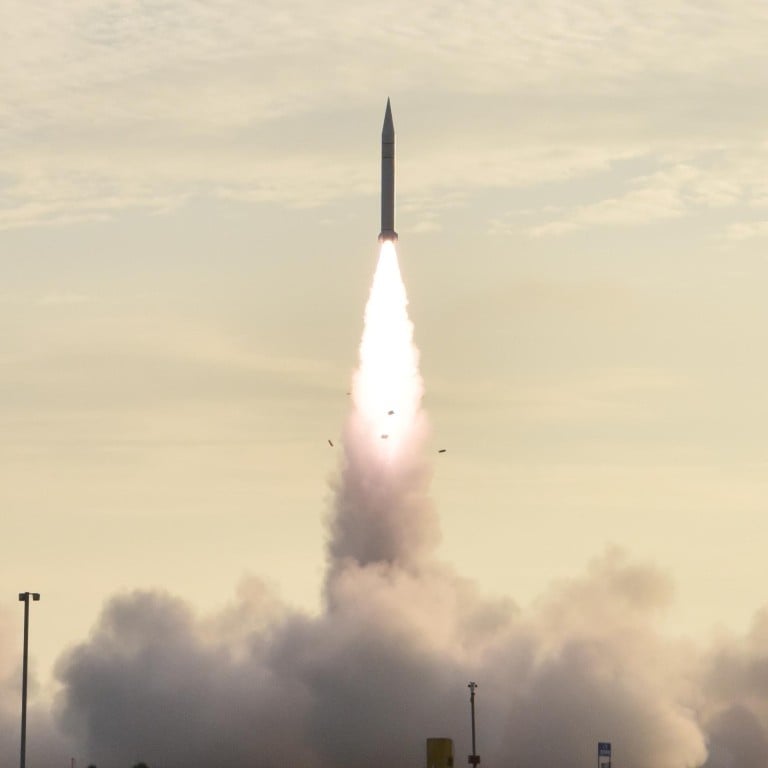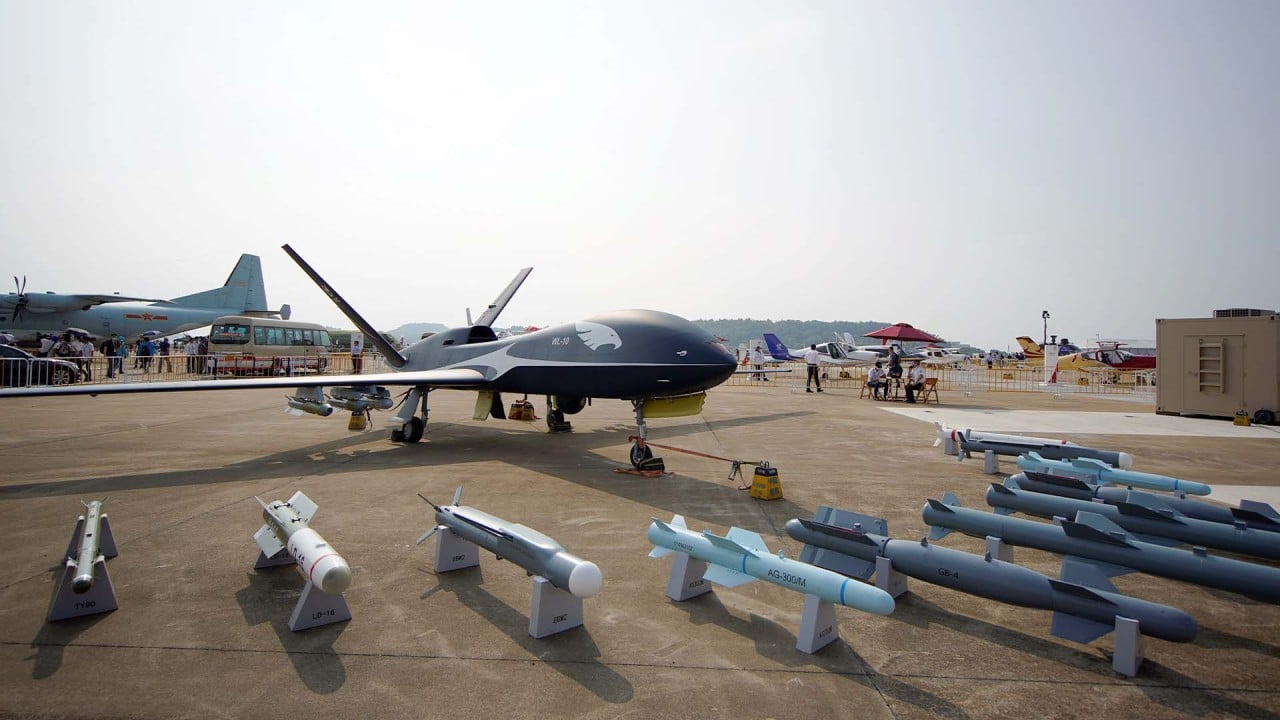
China’s nuclear threat only keeping up with US advances, Chinese experts say
- Country’s minimal deterrent policy remains but has to adjust to newer American missile defence systems, they argue
- Reports that China launched a nuclear-capable hypersonic missile in August were denied by Beijing
China is updating its nuclear weapons stockpile to keep up with the United States and ensure that it can maintain a minimum level of deterrence, Chinese observers said.
But an American diplomat said the United States was itself responding to use of hypersonic missiles for military applications by China and Russia.

03:29
Nato says China presents ‘systemic challenges’
US State Department spokesman Ned Price said on Tuesday that China was deviating from its minimal nuclear deterrence strategy, with 250 ballistic missile launches between January and September and other moves such as its development of delivery systems.
“These developments underscore that [China], as we’ve said before, is deviating from its decades-long nuclear strategy based on minimum deterrence,” Price said.
In nuclear strategy, minimal deterrence means possessing no more nuclear weapons than are necessary to deter an adversary from attacking.
According to Chinese policy documents, China will “maintain nuclear power at the lowest level required for national security”.
The government has said that its nuclear stockpile has been kept at that level, and that it will not enter nuclear arms races, nor deploy nuclear weapons in other nations.
Chinese Foreign Ministry spokesman Wang Wenbin said on Tuesday that China’s military build-up was for only defensive purposes, and the country had kept its nuclear stockpile at minimum level.
“As long as a nation is not threatening and damaging the sovereignty and territorial integrity of China, it will not be threatened by China’s national defence,” he said, adding that the US had spent huge sums of money on nuclear weapons.
US vs China: who has the stronger military?
“The hyping up of ‘China threat’ theory is just an excuse to justify it expanding military power to seek absolute security advantage.”
Chinese defence and international relations experts said China had to keep its “minimal deterrence” in line with advancing US missile defence systems.
Shi Yinhong, an international relations expert at Renmin University, said China needed to be capable of overcoming the US missile defence systems deployed in the region.
“The minimal deterrence needed 30 years ago is different from what is needed today,” Shi said. “China has to respond to the deployment of US missile defence systems to maintain its minimal deterrence. The nuclear stockpile in China is still significantly lower than that in the US.”

01:50
Japan hosts military exercises with the US, France and Australia amid tension over East China Sea
The US comments followed a Financial Times report on Saturday that China had launched a nuclear-capable hypersonic missile in August. The Chinese foreign ministry denied it was a hypersonic missile test, calling it “a routine test of a space vehicle to verify the technology’s reusability”.
Reports have suggested that China has 350 nuclear warheads, Russia 4,630 and the US 3,750.
US ambassador to the Conference on Disarmament Robert Wood said Washington was concerned about the use of hypersonic missiles by China and Russia.
“Hypersonic technology is something that we have been concerned about – the potential military applications of it – and we have held back from pursing military applications,” he said.
“But we have seen China and Russia pursuing very actively the use and militarisation of this technology, so we are just having to respond in kind. We just don’t know how we can defend against that technology; neither does China, neither does Russia.”
US concerns about China’s nuclear and missile capabilities had been escalating even before Beijing was reported to be able to deploy a hypersonic nuclear missile.
In its most recent report to lawmakers last year, the US Defence Department said China might have surpassed American military capabilities in missile development and was likely to double its stockpile of nuclear warheads over the next decade.

02:13
Chinese drones among new military aircraft highlighted at Zhuhai Airshow
Wu Riqiang, a professor at Renmin University specialising in arms control, said the US should not be “surprised to see China and Russia taking measures against its missile defence system”.
“The US said repeatedly that it will not accept any limit on its missile defence system,” he said. “Naturally, China is worried about the future deployment of such a system and needs to make preparations ahead.”
Wu said one key obstacle to holding nuclear arms control talks between China and the US was that the US had not acknowledged mutual vulnerability with China.
The concept of mutual vulnerability was seen as preventing the US and the former Soviet Union from engaging in a nuclear war during the Cold War period, achieved by each admitting it was vulnerable to the other’s nuclear forces.
“If the US is really concerned with China’s nuclear development, then why did the US not admit vulnerability to China?” he said. “Only by admitting vulnerability can nuclear arms control negotiations be made possible.
“It is a fact that China’s nuclear power is increasing. It is because of the changed situation that there is a higher demand for a nuclear stockpile.”
Additional reporting by Reuters and Jun Mai

